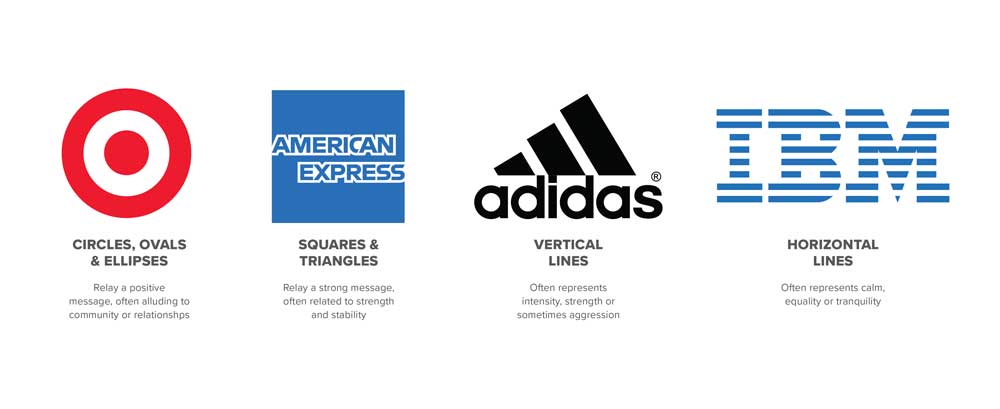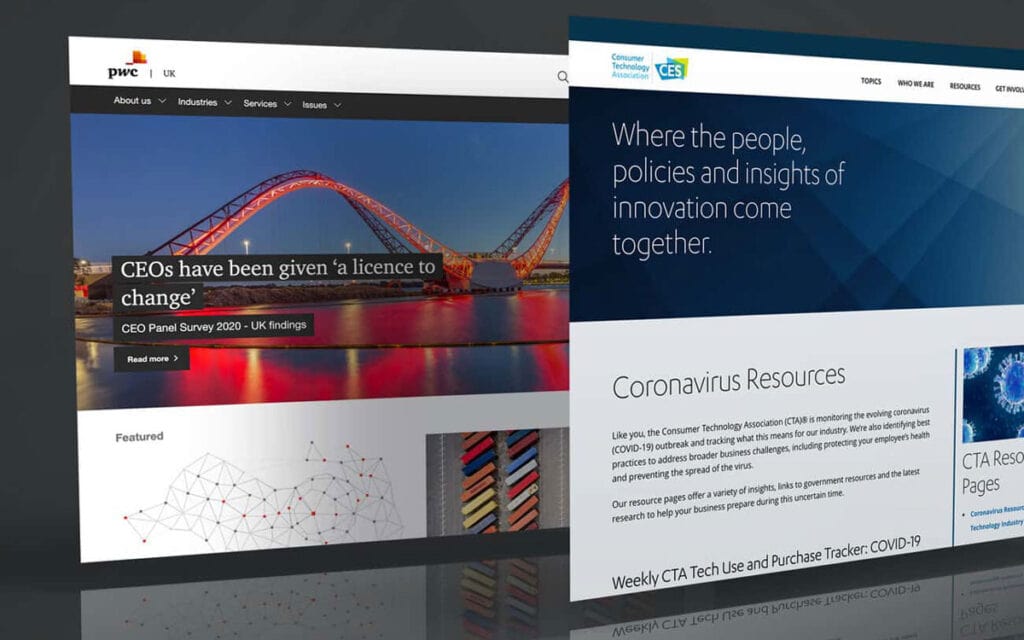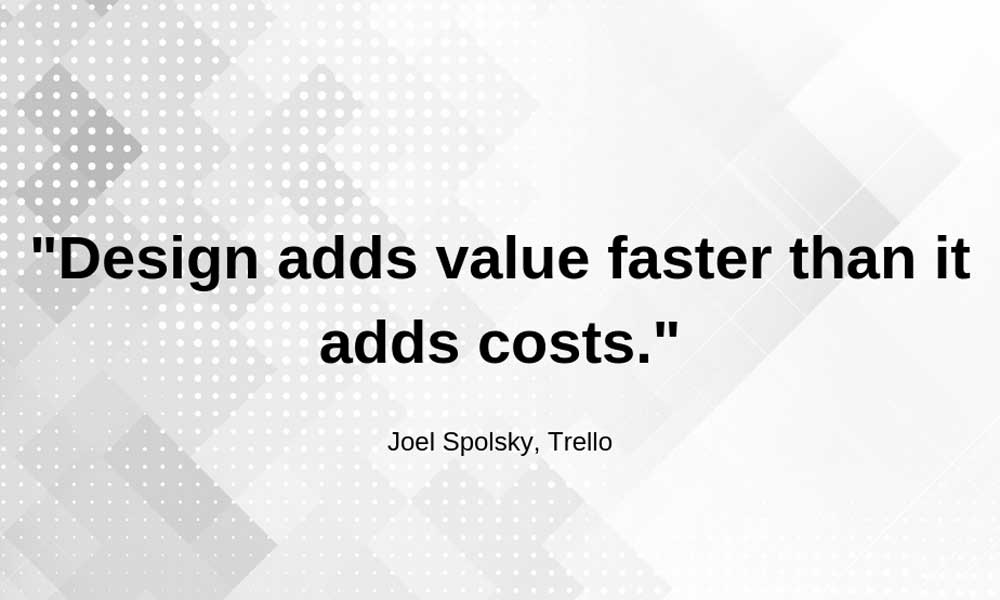
05 Mar 8 Reasons Why Smart Companies Invest in Branding Design
Branding Design: Why Smart Companies Invest
There are many ways to create a brand – whether through advertising campaigns, product packaging, website copywriting – but one of the most important uses of any small business’s time and money should be investing in branding design. A logo, colour palette, tone of voice, style guide, etc., all help set the stage for branding success.
But before we dive into the reasons why you would want to spend money on branding design, let us first define just what “brands” actually are. Frequently people think about companies like Coca-Cola, Nike, Apple, Google, Microsoft, Target, Hershey’s, Disney – every company out there with a recognisable image or trademark.
These companies each have established identities that they leverage across multiple platforms. They do this because consistent experience is crucial when competing against larger corporations.
However, smaller businesses often fall short in this department. Most small businesses don’t have the budget to hire top talent or pay hefty licensing fees for popular fonts and images. Also, small business owners usually lack the time needed to develop their own strong visual standards.
So instead, many settle for generic artwork provided by third parties that aren’t tailored specifically for their needs. Unfortunately, sometimes these illustrations end up being more confusing than helpful.
So, how can a small business owner take advantage of branding design without breaking the bank or sacrificing quality? By leveraging some basic principles along with a bit of creativity and strategy, you can establish yourself as a thought leader within your industry while still keeping costs down.
The key is finding a designer who understands what makes your business unique and will work closely with you during the process.
Here are some reasons why you might consider investing in a branding design:
Why Invest In A Business Logo?

Businesses today face intense competition, especially online. People expect fast service and impeccable customer care.
If you’re trying to make it big in the world of commerce, you must differentiate yourself from others. One way to do this is through a distinctive logo that helps tell consumers about what sets your products apart from competitors.
Your logo also serves as a core part of your branding system. When potential clients see your logo, they instantly associate it with your business. Therefore, if you choose a bad one, it could potentially hurt your reputation rather quickly.
One thing worth mentioning is that almost everyone has seen thousands upon thousands of other logos throughout their lives. That means it’s tough to stand above the crowd.
However, a good logo doesn’t necessarily cost much money. Many designers offer simple yet affordable logo design packages ranging between £100-£1000 depending on scope and complexity.
Another great benefit of hiring a graphic artist is that they typically come armed with ideas and suggestions based on previous projects. Since they understand the ins and outs of designing graphics, they can provide creative input to improve your overall results.
Branding For Marketing & Advertising

It’s no secret that branding design plays a significant role in marketing. Although its importance cannot be understated, it isn’t always clear how branding works or why it’s so necessary.
For example, say you had two identical stores next door to each other selling the same items at the same price point. How would anyone distinguish yours from theirs?
Without branding, both shops would appear completely indistinguishable. After all, they carry the same name, serve the same purpose, sell the same things, and operate in virtually identical environments – so where’s the difference?
That’s where branding design comes into play. Through careful planning and strategic implementation, you can position yourself as a true expert in your field while communicating the value of your goods and services to prospective buyers. All of this happens through branding.
Branding is essentially a combination of different aspects of your business such as colours, typography, imagery, tone of voice, messaging, consistency, etc. Once you’ve decided on the elements that speak to your target audience, you can begin implementing them across various mediums to increase awareness and recognition.
As mentioned earlier, branding applies equally well to physical locations and websites, social media profiles, advertisements, brochures, posters, etc. Just because someone looks at your storefront doesn’t automatically guarantee sales.
Likewise, a great looking web page won’t keep visitors engaged enough to convert into paying customers. Fortunately, branding allows you to combine several components to maximise efficiency and effectiveness.
The Importance Of A Web Presence

If you ask any small business owner what they think the biggest challenge facing their company currently is, chances are they’ll answer “being competitive.” With so much attention focused on digital marketing, few seem to realise the importance of establishing a solid web presence.
Although online advertising benefits, it is far too easy to lose focus once you stray away from your original goals. Too many users find themselves overwhelmed with information overload, meaning they struggle to stay relevant amongst the clutter.
Also, although social networking sites are beneficial, they present their problems. Facebook, Twitter, Pinterest, Instagram, LinkedIn, etc., all attract millions of new members daily, making it difficult to separate yourself from others.
Fortunately, branding design offers solutions to many of these issues:
- Branding allows you to identify your strengths and weaknesses so you can strategically direct resources towards areas that give you the greatest return.
- Branding gives you control over your message. Instead of allowing the public to dictate to you, you can decide what content gets promoted and what remains hidden behind closed doors.
- Branding creates an unspoken connection with your viewers.
Because your brand represents something significant, it becomes synonymous with your organisation.
Finally, branding establishes a foundation for future growth. It communicates your vision, mission, personality, ideals, and values when done correctly. As long as your core beliefs remain intact, you can continue building upon this foundation indefinitely.
How Can My Small Business Use This Information To Improve Its Image?
Every day, countless small businesses fail due to poor management and financial decisions. While some blame outside forces, the majority of failures occur internally. Poor decision-making, internal politics, employee turnover, and improper accounting practices are the chief culprits.
Unfortunately, unless you happen to run a successful corporation or franchise, nobody cares about how badly you screwed up.
If you’re smart about handling mistakes, showing leadership skills, identifying opportunities, and taking action, you can quickly turn around your situation.
However, you can immediately show others that you possess qualities beyond raw skill level with branding. A strong brand increases credibility, builds trust, and attracts loyal followers.
Is it Really Necessary to Invest in Branding Design?

Brand building has become more complex over time – now involving not just an image but also a personality or voice that consumers can connect with.
As marketing experts have pointed out for years, brands are “the total of everything about us” – our values (ethical), culture (funny) and experience (reliable).
A brand should convey who we are and help customers make sense of our differences. To do this successfully, marketers need to understand their audiences’ emotional triggers and build experiences around them.
They must create products, services, promotions and communications that move beyond simple logic and into deep consumer loyalty. That means finding ways to tap into emotions such as love, trust, fear and anger, so their messages resonate powerfully.
But creating those memorable moments isn’t enough; companies must then protect and nurture their reputation at all costs. Branding today is like parenting – there needs to be consistency across all touchpoints if you want to instil confidence in your audience.
So, why is it essential to invest in your branding design? Because without it, you won’t be perceived as trustworthy.
You’ll lose visibility among competitors and miss opportunities to showcase your unique selling proposition. And because of its complexity, investing in branding requires significant resources and commitment.
Today, many businesses struggle to establish themselves on social media platforms where users share content freely.
Facebook recently revealed that 72% of US teens use Instagram daily, Twitter reports 500 million tweets every day, Pinterest boasts 5 million pins per day (60% repins), and LinkedIn claims 740 million members worldwide.
As a result, some professionals spend less time on these channels than others. This poses challenges for traditional advertisers since they typically rely on paid advertising to reach online communities.
Paid ads can work well within clearly defined target markets, but they require high levels of precision to ensure success.
However, with branded content, which taps into existing user behaviour, marketers can deliver consistent messaging across multiple touchpoints via organic search engines, retweets, shares, likes and other interactions.
In addition to making ad dollars stretch further, branded content offers several benefits, including increased engagement, conversion rates and sales.
According to research, 76 per cent of global digital display advertising was spent on mobile devices last year, up from 65 per cent the previous year.
The majority of that spending went toward native advertising, which includes video, images and text-based campaigns that appear alongside relevant content rather than interrupting viewers with interstitials.
With branded content, marketers can take advantage of how people browse the web, viewing lots of information before deciding whether to click through to another site. Research shows that most people consume three times more content on a smartphone than they did five years ago.
The latest technology tools allow marketers to quickly and inexpensively produce compelling branded content.
For instance, Snapchat allows influencers, celebrities and everyday folks to post short videos and pictures to a dedicated Story channel. These Stories can include photos, graphics, GIFS and videos. Users interact with stories, sending snaps back and forth with friends.
Other popular apps include Periscope, LiveU and Meerkat, which lets anyone broadcast live video feeds. Brands can even harness trending topics or hashtags to engage followers.
Social media analytics tool BuzzSumo found that 79% of top accounts used branded content in 2016, compared to 25% in 2015.
Consumers expect quality content, especially when they’ve already connected emotionally with someone else. Branded content allows companies to strengthen relationships – particularly during difficult economic times – by providing solutions to problems and offering value.
By partnering with trusted voices and personalities, brands can develop long-lasting connections with fans, driving higher returns on investment.
Building solid brands doesn’t happen overnight. Creating a cohesive identity takes persistence, creativity and patience.
Most importantly, however, it begins with understanding your customer better than ever. With that knowledge, you will begin to see sales, traffic, and overall growth results through creative branding design.
The post 8 Reasons Why Smart Companies Invest in Branding Design is by Stuart and appeared first on Inkbot Design.


